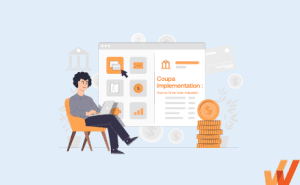
Most organizations have a flawed or outdated procurement process – and many times both.
Lack of transparency, poor supplier relationships, lack of employee accountability, low levels of compliance, human error, and delayed timelines are just a few of the many challenges slowing down the procure-to-pay process. Add slow, outdated procurement software to the equation, and organizations are set up for procurement failure.
But with so many moving parts and parties involved in a standard procure-to-pay process, streamlining things for efficiency isn’t as easy as it sounds. This is where an automated P2P solution can turn the tables in your favor and maximize the bottom line.
In this article, we’ll walk through the procure-to-pay process and take a closer look at its challenges to highlight the difference S2P automation and procurement software can make. By the end, you’ll find the best P2P solutions to consider and hit the ground running.
What Is Procure-to-Pay (P2P)?
Procure-to-pay is an end-to-end process to manage the procurement of goods and services from an external supplier. It defines the steps and approvals involved in the framework, from identifying the need to buy from outside to clearing the accounts payable for all vendors.
This clearly defined flow is crucial to reducing spend leakage and minimizing logistical issues in your procurement pipeline.
7 Steps of the Procure-to-Pay Process
A well-planned procure-to-pay process can simplify and systemize the procurement process to build healthy vendor relationships, have better control over spending, maintain a positive cash flow, and increase savings.
An optimized P2P framework covers seven essential steps: identification, requisition, purchase order issued, goods receipt, supplier performance, invoicing, and accounts payable.
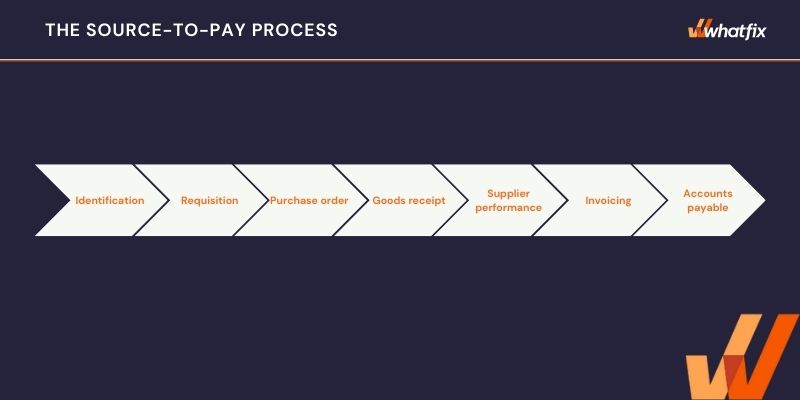
Let’s break down each of those seven P2P cycle steps:
1. Identification
The P2P process starts by identifying the need to buy goods and services from external vendors. This step involves a clear breakdown of the requirements in terms of scope, timelines, vendor shortlist, etc., followed by validating these specifications.
The procurement team collects details like the terms of reference and statements of work for the goods/services required. The department placing the request has to share this information.
2. Requisition creation and approval
Once the need is validated, the department has to submit a purchase requisition form to place an official request for their requirements. The team lead, department head, or procurement team reviews this form to approve or reject the request. The reviewing authority takes two main factors into account: the available budget and the validity of the need.
Once the request is approved, the procurement team sends out a request for proposal (RFP) to shortlisted vendors. These suppliers send their bids with timelines, quotes, and other specifications.
3. Purchase order issued
With multiple potential suppliers or vendors, the procurement team evaluates various parameters such as turnaround time, quality of outputs, long-term pricing, and compliance requirements to narrow the list of potential vendors and begin negotiations.
Once the supplier and prices are finalized, the requesting department creates a purchase order (PO) for the vendor. This PO becomes a legally binding agreement when the vendor confirms the receipt of the document. The procurement team then reviews the PO to assess and approve its legitimacy.
For a one-time or low-value purchase, employees can perform a spot buy and skip the step of creating a purchase order.
4. Goods receipt
In the next step, the supplier fulfills the requirement of goods and services, and the requesting department has to review the deliverables. This review process ensures all the deliverables are in line with the contract terms and don’t contain any defective items. The team can then approve or reject the receipt of the goods.

5. Supplier performance assessment
After approving the delivery receipt, the team also assesses the supplier’s performance to maintain a record for future reference. This assessment covers criteria like timely delivery, quality of deliverables, compliance, communication, service standards, and total cost of ownership.
6. Invoice submission and processing
Invoicing and its digital version e-invoicing is the most critical and time-intensive step in the P2P process. Teams have to tally the purchase order, vendor invoice, and goods receipt to identify any errors and verify the accuracy of the amount due to the vendor. When this match is complete, there’s an additional step of payment authorization.
7. Accounts payable
Once the invoicing is complete, the finance team receives the approved invoice and processes the payments. The P2P process ends when all payments are cleared and the ledgers updated.
6 Challenges of the Procure-to-Pay Process
Without a powerful P2P automation software to replace the outdated spreadsheet-based procurement, organizations will face these main procurement challenges:
1. Outdated technology
Organizations are setting themselves up for failure without a new digital P2P software to manage the procure-to-pay process. In fact, the most-cited P2P pain point cited by procurement professionals in a 2018 report from Paystream was, “our current technology is outdated/inadequate”.
Without new procurement-related software, organizations will:
- Have higher costs
- More convoluted processes
- Fail to meet efficiency standards
- Fail to meet customer, supplier, and vendor expectations and needs
- Fall behind competition
2. Siloed P2P processes and teams
Outside of legacy technology and manual processes, the other highest reported P2P challenge cited in that 2018 report was, “our procurement process differs across locations/other departments”.
Every department within an organization follows its workflows and order of priorities. Improper coordination and communication between different departments make it difficult to bring uniformity to the procurement process. The absence of a uniform process ultimately translates to glaring discrepancies and errors.
3. Non-adherence to compliance and policy
Employees bypass procurement policies to avoid multiple rounds of approval for every request. Besides, different teams involved in the process—like procurement and accounts payable—often breach the terms of the contract because of the lack of clear and real-time communication between them.
4. Low spend visibility and lack of transparency
Departments can easily overspend on their requirements without the right tool to offer visibility into procurement expenditure. The lack of proper records to track each department’s spending leads to minimal data transparency, severely hampering the overall decision-making process and resulting in spending leakages.
5. Poor supplier management
Onboarding a new supplier and maintaining proper communication is a challenge for most teams without a vendor management software to manage all the work. Moreover, buyers often don’t clearly understand their procurement expectations, further creating friction and spoiling the relationship between the two parties.
6. Delayed invoice processing
While the invoicing process is lengthy and time-consuming, manual verification and processing make the approval turnaround longer. This leads to delayed payments and hurts your relationship with the vendors.

Procure-to-Pay Best Practices
Every business customizes the P2P process to suit its needs. But a few best practices can optimize the process for greater success. Here are a few proven practices to get the best out of your procurement plan:
- Standardize the process and lay down the responsibilities of every party involved
- Encourage communication and collaboration between cross-functional stakeholders
- Offer greater visibility into every aspect through complete data transparency
- Embrace robust technology and adopt scalable P2P software to automate the process
- Improve supplier relationships with a focus on better vendor management and engagement
- Leverage data to set measurable and data-backed goals
- Constantly monitor what’s working and what’s not to streamline your workflows further and maximize savings.
Benefits of Digitalizing the P2P Process with Cloud Software
Digitizing your P2P plan can take the tedious elements out of the picture and ramp up your operational efficiency. This automated workflow will help maintain a solid supplier rapport, improve strategic decision-making, and create transactional transparency.
Modernizing your P2P process with a procurement automation tool also reduces the cost per purchase order (PO).
The table below uses data from a 2018 report from PayStream to break down the average cost per PO by organizations that have either no e-procurement tool, have a legacy application, or have a modern cloud-based application:
| Type of Procurement Technology | Cost Per PO |
| Organizations with no procurement tool | $89.27 |
| Organizations with a legacy ERP or home-built procurement solution | $65.05 |
| Organizations with a modern, cloud-based procurement software | $30.72 |
Let’s look at five primary benefits from digitizing your P2P process with e-procurement software:
1. Cost savings and streamlined processes
P2P automation offers processing efficiency that reduces expenses caused by delays and errors. You also get complete visibility into your supply chain to identify redundancies and roadblocks and take timely action before they hit your revenue. Besides, you have all the data on a single platform, making it easy to control expenses and increase savings.
2. Boost supplier relationships
Automation lets you connect and engage with suppliers on a centralized portal. You can share documents, track progress, and measure performance directly on this platform. But here’s the best part: automated invoicing and processing also ensures timely payments to all suppliers, maintaining a positive image for your organization.
3. Ensure policy compliance
Organizations may further level up their procurement process by integrating an e-procurement solution into their setup. With an intuitive interface, this tool encourages higher user adoption and allows organizations to significantly cut down on meaningless paperwork and maverick spending—ultimately delivering a compliant purchasing process.
4. Speed up invoicing
P2P automation gives you the power to auto-create and deliver POs for approved requisition requests. With a powerful three-way matching functionality, an automation tool can verify and process POs, delivery receipts, and invoices much faster with far lesser scope for error. Advanced data analytics will also flag issues like what’s driving up your total spend, non-compliant expenses, and similar problems.
5. Eliminate human error
A standard P2P process includes many finer details prone to human error in a manual setup. Automating the process with cutting-edge artificial intelligence technology removes the possibility of human error and frees up your time to invest in more high-value tasks.
7 Best Procure-to-Pay Software in 2024
Here are seven of the best software applications to manage the e-procurement lifecycle:

1. SAP Ariba
- G2 review rating: 3.9 out of 5 stars
- Price: Custom pricing
SAP Ariba is an all-in-one, on-demand procurement, and supply chain management solution. The tool lets you build supplier relationships, analyze all spend categories and offer data transparency to all parties.
Ariba is one of the industry leaders for P2P automation with its flexibility and ability to function independently with minimal oversight.
Some of its top features include:
- Integrates with a non-SAP ERP system
- Easy setup and user-friendly interface
- Measures and visualizes critical data points
- Offers complete visibility into spending
Read our blog post to learn more about SAP Ariba implementation.
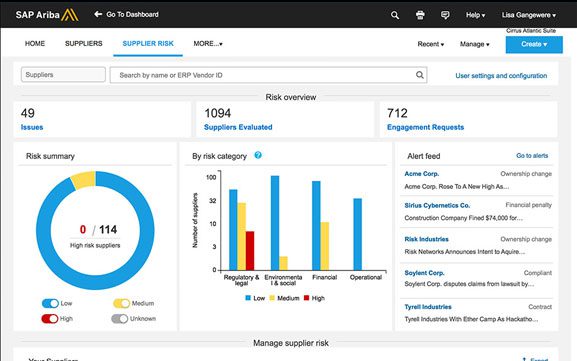

2. GEP SMART
- G2 review rating: 4.2 out of 5 stars
- Price: Custom pricing
GEP SMART is an e-procurement software suite of tools from GEP Software. It empowers organizations to unified their S2P processes into a centralized cloud application and provides a comprehensive set of industry leading features and tools.
It’s core procure-to-pay features include:
- Simple requisition and purchasing.
- Simple, user-friendly catalogs and shopping experiences.
- Trackable purchasing order management.
- Invoice management.
- Dynamic, custom discounting.
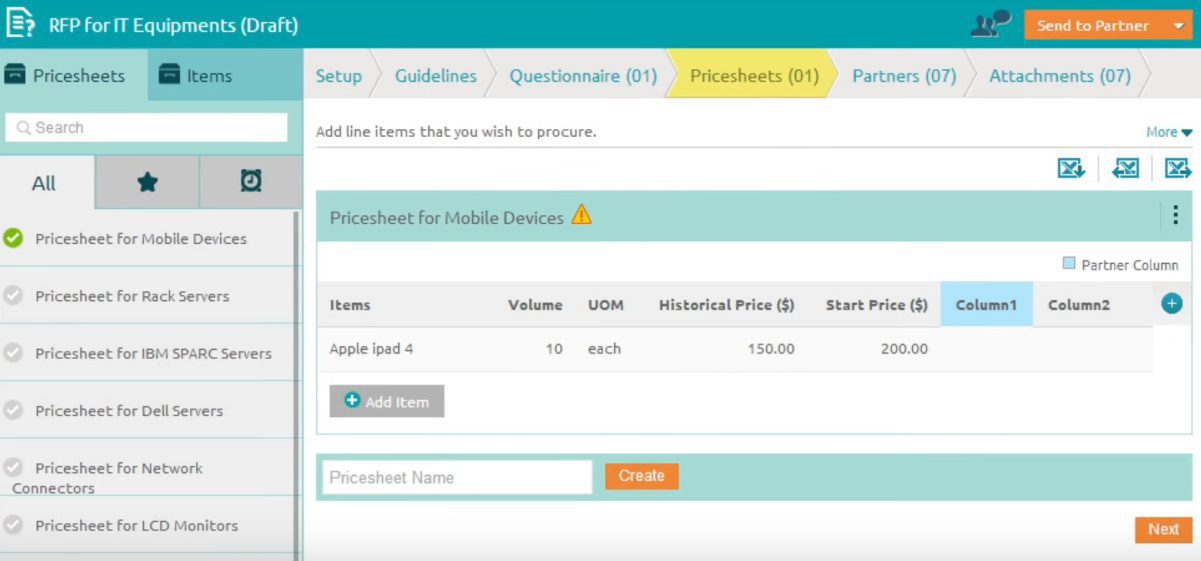
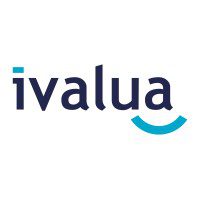
3. Ivalua
- G2 review rating: 4 out of 5 stars
- Price: Custom pricing
Ivalua is an S2P application that provides a centralized system for managing the entire supplier relationship and spend management process with a full suite of automation procurement tools and features.
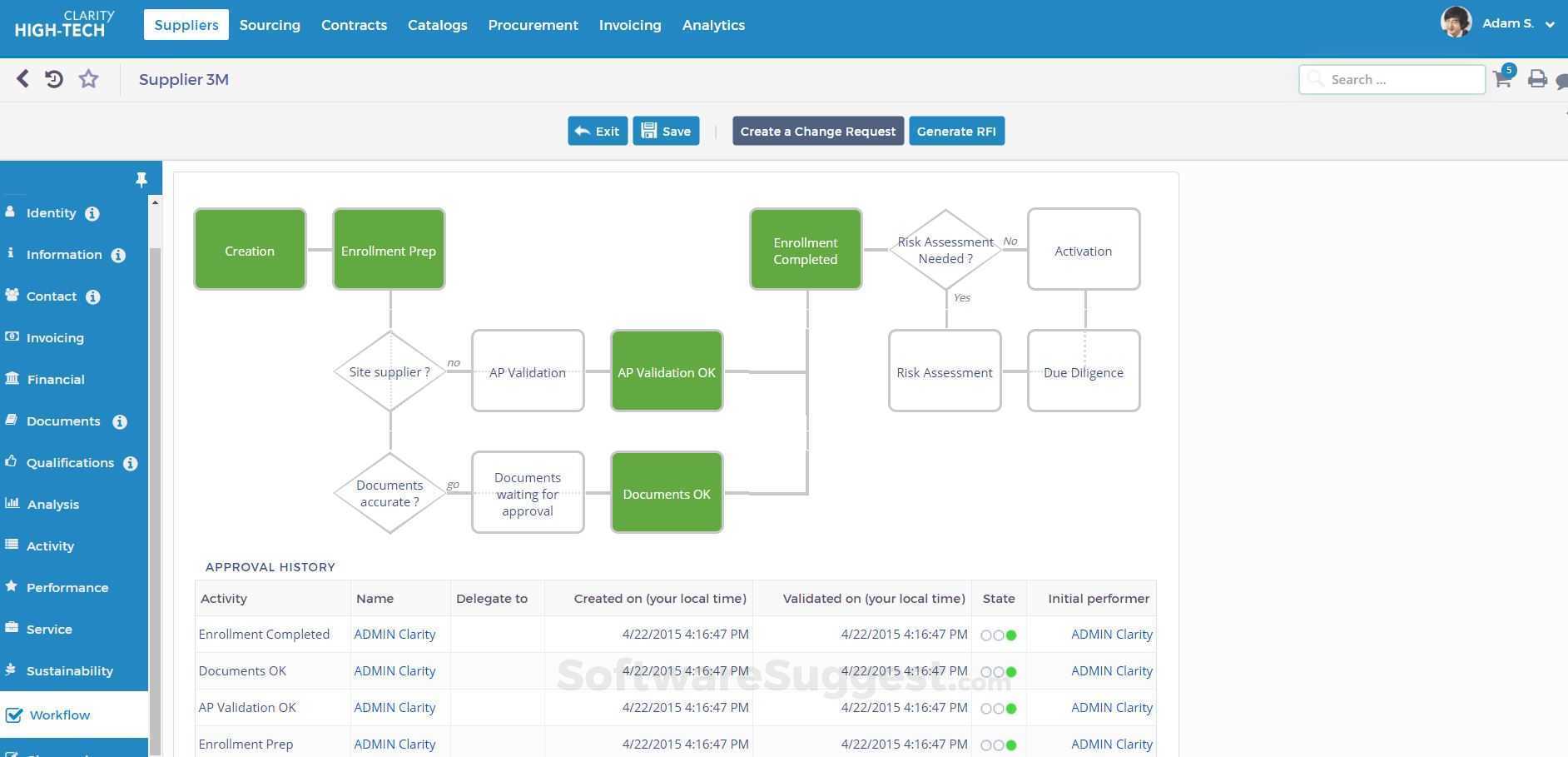

4. Precoro
- G2 review rating: 4.7 out of 5 stars
- Price: $35 per user a month for small teams of 20 or less, custom pricing teams of 20+
Precoro is a procurement process optimization solution with advanced automation capabilities and power up all aspects of a P2P plan. The tool promises a 2.5x faster approval rate for all documentation and savings of up to 19%.
You can connect your ERP system to Precoro with a free API or ready-made integrations to create seamless workflows with vendors and maximize inter-departmental collaboration.
Some of its top features include:
- Automatic PO creation and conversion of requests into orders
- Customizable approval process with on-the-go approval options
- Offers ease of scalability to leg up your operations
- Detailed visual dashboards to create spending transparency
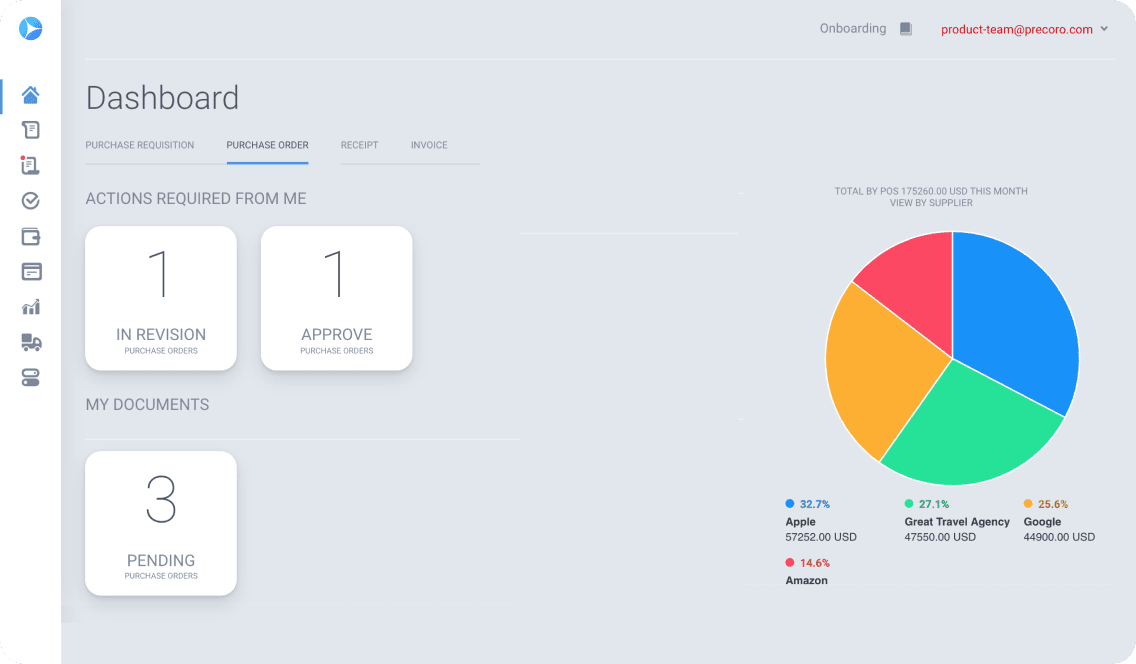

5. Coupa
- G2 review rating: 4.1 out of 5 stars
- Price: Custom pricing
Coupa is a leading procurement solution designed to deliver a consumer-like buying experience. It allows you to set up purchase requisitions and simplify the first step for employees. You can effectively manage every step in the process—from request approval and POs to contract and inventory management.
One of Coupa’s many features is its “Spend Guard” which acts as a fraud mitigation system. It flags suspicious activity and signals fraud preemptively.
Some of its top features include:
- Offers a “Guided Buying” experience to users
- Mobile app to provide approvals from anywhere
- Increase spend compliance with contract repository
- Delivers real-time visibility into the budget impact
Learn more about Coupa implementation.
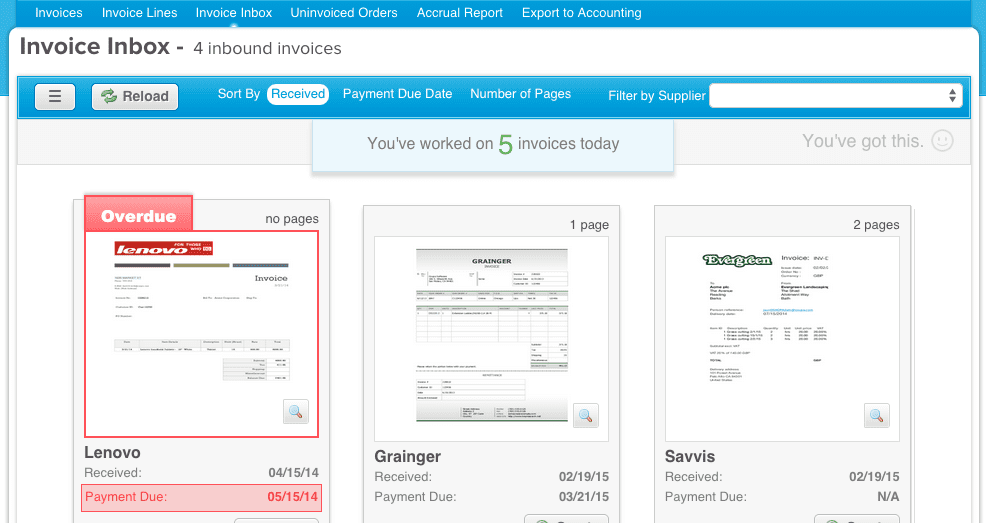

6. Jaggaer
- G2 review rating: 4.5 out of 5 stars
- Price: Custom pricing
Jaggaer is a digital transformation platform dedicated to the procurement spectrum. Teams can integrate this solution with their ERP and accounting setup to get maximum visibility into spending, supplier management, e-procurement, and invoicing.
Its all-in-one P2P tool helps reduce supply chain risk and modernizes procurement collaboration with vendors with its user-friendly interface.
Some of its top features include:
- Offers category management capabilities to streamline high-value categories
- Comes with access to a managed supplier network of over 4 million suppliers
- Brings a complete suite of products to drive procure-to-pay automation and growth
- Available in over 70 countries across the world with a global support team
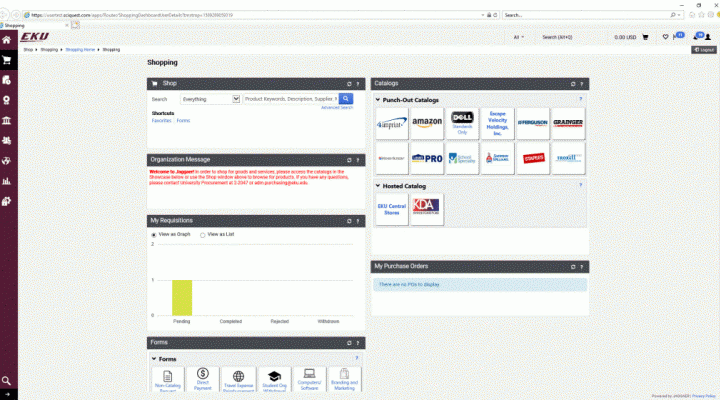
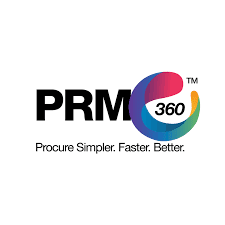
7. PRM360
- G2 review rating: 4.8 out of 5 stars
- Price: Custom pricing
PRM360 is an innovative procure-to-pay solution for automating every step in the framework—from vendor sourcing and management to catalog management and spend analysis. You can easily post your requirements on the platform, get bids from suppliers, and pick the best offer, saving up to 5-15% costs on average.
PRM360 is designed for AI-powered procurement automation with easy customization options and quick implementation.
Some of its top features include:
- Capable of reducing processing costs by 25-50%
- Simple yet detailed dashboard to present meaningful analytics
- Great categorization of products to speed up requisitioning
- Easily accessible support with practical guidance
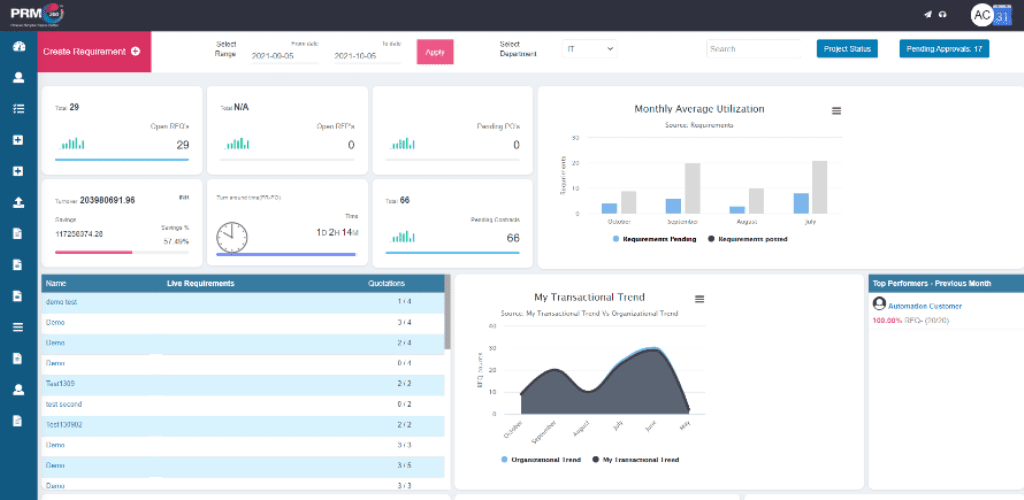
While a new e-procurement software empowers companies to streamline their P2P processes, reduce costs, automate manual processes, and eliminate human error – organizations must first focus on driving adoption of its procurement applications. As with all new complex technology, onboarding and adoption can be a major challenge – especially for employees resistant to change.
Even simple procurement software tasks may seem challenging at first – such as submitting or responding to an RFx response. However, with a digital adoption platform like Whatfix, organizations can empower their P2P software users with in-app guidance, reinforcement training at the moment of need, and on-demand performance support.
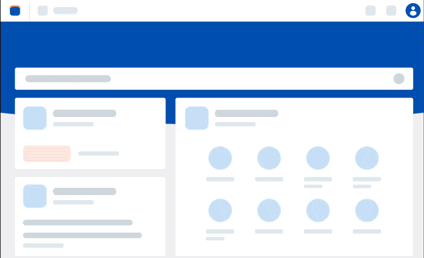
With Whatfix, companies can create engaging in-app content, in a no-code environment, such as:
- Onboarding task lists
- Product tours
- Interactive step-by-step walkthroughs
- Smart tips
- Compliance alerts and field validation
- Embedded self-help knowledge bases

With Whatfix Analytics, organizations are also able to capture user behavioral data to understand the adoption level for its procurement technologies, see what features are (and aren’t) being utilized, and make data-driven decisions on creating optimal onboarding and training flows to help its users become software experts.
To learn more about how Whatfix can help your organization embrace digital procurement, schedule a personalized demo with our digital adoption experts today!
Request a demo to see how Whatfix empowers organizations to improve end-user adoption and provide on-demand customer support
Thank you for subscribing!


